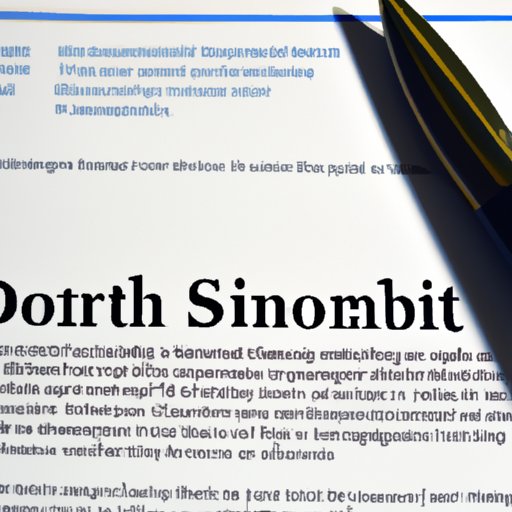
How to Apply for Short Term Disability: A Comprehensive Guide
Accidents and illnesses happen unexpectedly, and sometimes these events can lead to unexpected periods of time off work. Short term disability insurance can protect individuals and their families in these situations by providing financial support during a temporary disability leave. In this article, we provide a comprehensive guide on how to apply for short term disability, eligibility requirements, tips for preparing a strong application, benefits, common mistakes to avoid, and readers’ legal rights.
Step-by-Step Guide to Applying for Short Term Disability
The process for applying for short term disability varies depending on the insurance policy and employer. Typically, the first step is to inform the employer about the disability and request the necessary paperwork. This paperwork usually includes a claim form, an authorization form to release medical information, and a medical certification form from a healthcare provider.
Once you have the necessary forms, fill them out completely and accurately. On the claim form, be sure to provide all necessary information, such as the dates of your disability and how it impacts your ability to work. On the medical certification form, have your healthcare provider fill out the form to support your claim and provide any necessary medical documentation.
After completing the forms and assembling all supporting documentation, submit everything to the insurance company or third-party administrator. Be sure to follow up and provide any additional information that may be requested by the insurance company.
Eligibility Requirements for Short Term Disability
To be eligible for short term disability, the individual must have a condition covered by the policy. Typically, this includes medical conditions that require temporary leave from work, such as surgery, pregnancy and childbirth, and illnesses that prevent the individual from working.
The duration of the disability leave is typically defined in the insurance policy, but it usually ranges from several weeks to several months. Additionally, individuals must meet certain legal requirements, such as being employed at the time of the disability and having worked a certain number of hours to be eligible for benefits.
Tips for Preparing a Strong Application
To prepare a strong application, it’s critical to provide all necessary documentation, including the medical certification form completed by a healthcare provider. It’s also important to follow through quickly and stay in contact with the insurance company to ensure a smooth claims process.
However, even with a strong application, claims can be denied. In these situations, it’s important to know how to navigate the appeals process. Common strategies for appealing denied claims include providing additional medical documentation, consulting with a lawyer, and working with healthcare providers to gather more information in support of the disability claim.
The Benefits of Short Term Disability
Short term disability benefits provide financial support during temporary leave from work, which can help individuals and their families avoid financial difficulties and maintain their standard of living. It also provides an opportunity for individuals to focus on their physical and emotional wellbeing, reducing stress and promoting healing.
Furthermore, by providing individuals with the support they need during recovery, short term disability can improve productivity and reduce the social and economic costs associated with temporary disabilities.
Common Mistakes to Avoid
One common mistake when applying for short term disability is failing to provide complete and accurate information on the application. This can lead to delays or denials of a claim. Another mistake is failing to follow up and provide additional information when requested by the insurance company. This can also result in a delay or denial of benefits.
To avoid these mistakes, applicants should double-check their applications for completeness and accuracy and stay in constant communication with the insurance company.
Your Legal Rights When It Comes to Short Term Disability
Individuals have legal rights throughout the short term disability application, claims, and appeals process. These rights include privacy protections with respect to medical information and the right to appeal a denied claim.
Additionally, employees have the right to use short term disability benefits without being forced to use paid vacation or sick time. Employees also have the right to file complaints and seek legal action if they have been wrongfully terminated or discriminated against because of a disability.
Conclusion
Short term disability can provide critical support during a difficult time for individuals and their families. By following the guidance in this guide and leveraging the resources provided by the insurance company, applicants can help ensure a successful application process. By asserting their legal rights, they can also help protect themselves and others against discrimination and wrongful termination. Ultimately, short term disability supports the physical, emotional, and financial wellbeing of individuals and society as a whole.





